I’m back! I have to say that, after drinking margaritas with Iris, the next best part was the spider tour, and in particular this one place, the Thompson Hill Information Center and Rest Area, which was magical.
I had a good feeling when I saw all the plants growing up right next to the building, and I was right. I went to the left behind the shrubbery and there in the corner, I saw this:
All those dark dots running down the center? Spiders. All Parasteatoda. I counted 9 in just this one little strip, and there were more and more all around the building, and then there were multiple picnic shelters that were home to many more. It was a spider bonanza!
Want to see a few? Look below the fold.
Aren’t they pretty? That last one is gnawing on an ant. All of them had an egg sac, or multiple egg sacs, nearby. I’m thinking maybe I ought to make a collecting trip to this place and gather a horde for the lab colony.
Oh, as for the information in the Information Center, and the facilities of the rest area? I don’t know. I didn’t go inside. There were too many glories on the outside.
We eventually tore ourselves away and drove on down the road to the General Andrews Rest Area. The population wasn’t quite as dense there, but like we saw the other day, we saw multiple webs with a dense clot of debris in the center. I tore this one away from the web to get a closer look, and there was Mama Parasteatoda, guarding two egg sacs.
Since I’d ripped her nest out of its web, I felt obligated to take her home with me. She now has a nice cage in the lab, with her egg sacs. I had to name her General Andrews, of course.
The next stop was — control your giggling, children — the Middle Spunk rest area (there is also a Lower Spunk, if that helps). We were seeing fewer spiders because the wind had sprung up, and we were getting some hard splattering rain, but there were lots of webs, and in particular, a lot of spiderlings.
You have to love spiders, because here’s one itty bitty baby spider that is already jaws-deep in the carcass of a mosquito. They start killing mosquitos as soon as they’re ambulatory.
One last stop before we scurried home, because the area is currently under a tornado watch, it was hot and mucky, and there were far too many mosquitos out and about. The not-fun part of all this is trying to hold still and focus on a tiny spider long enough to shoot a bunch of photos, all while a whining cloud of mosquitos are hovering around trying to drain you dry.
We stopped at the Sinclair Lewis interpretive center in Sauk Centre, which has a now defunct museum (I guess they moved it elsewhere in town) and a little red schoolhouse. Everything is painted red to match, which shows. There were a few Parasteatoda in the neighborhood, but strangely, the buildings were swarming with big fat Opiliones scurrying around, which, sad to say, don’t interest me much. It is curious though that they were so populous in this one place in our travels.
I also saw a lovely tetragnathid hanging out on the museum, and took a quick picture.
Then the mosquitos killed us and we had to stop. It was fun while it lasted!

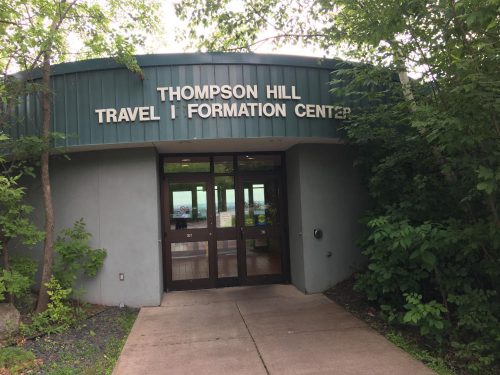

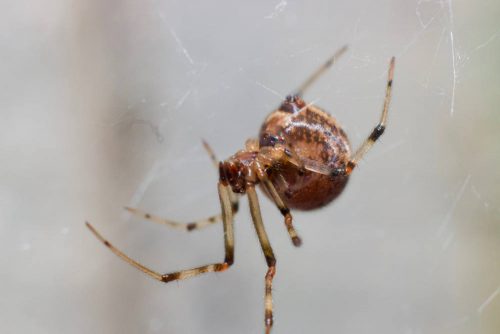
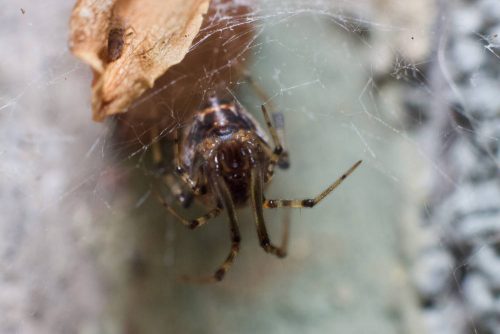
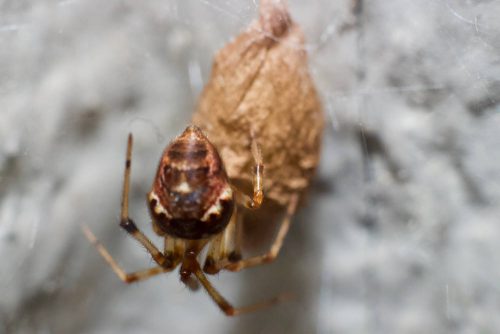

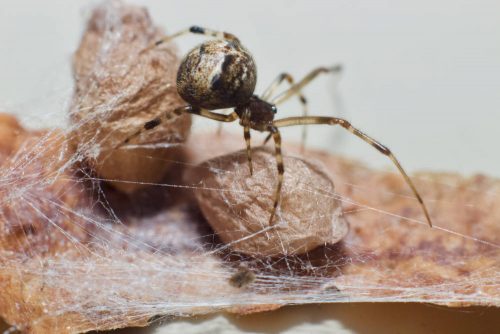


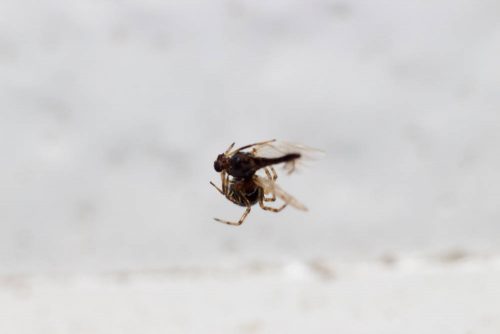
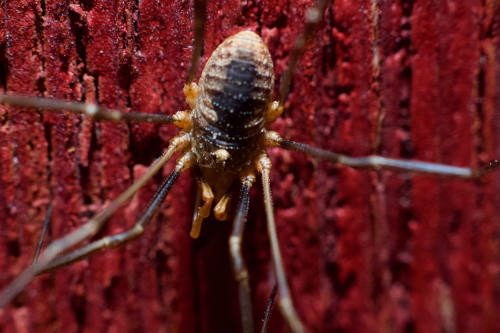


I had to name her General Andrews
May have some significance in the USA but it is meaningless elsewhere Why the strange name?
Well I suppose we can use Victoria R as a name. Err, wait we already do.
Whatever became of that egg sack that fell apart? Did any of those spiderlets survive? I ask because you’d mentioned that mama spider secretes some type of liquid into the sack (to keep it from disintegrating, I guess?) and I’m wondering if that’s a consistent phenomenon you’ve encountered. If so, how do you get around it, short of bringing mama spider along for the ride when you find eggs?
So she’s named after the human designation for the area where she was found.
jrkrideau
Spider was kidnapped from the General Andrews Rest Area.
The egg sac that fell apart is still in the incubator. It looks OK so far; it’ll be several days more before they develop limbs, if they do at all.
So, PZ what are a Big and Lower Spunk?
heh heh heh spunk
Please. Help me.
Um, changing the subject a bit, and not intending to be intrusive at all, but, well, some news of Iris would be welcome. If there is news you can share, with all associated caveats, cautions, reserves, permissions, and a dollop of Minnesota reticence. Ya know.
seconding psanity
Iris is looking terrific and is doing well. She still has some tribulations ahead of her, but would like to rejoin the fold…I told her that self-care comes first.
Cool!
My personal favorites
– The first one of Mama Parasteatoda, guarding two egg sacs… engrossing story
– Tetragnathid hanging out… striking image
The mildly deranged penguin is wondering what the Thompson Hill I[n]formation Center is made from that’s so tasty to spiders. Having devoured the n, and also the surrounding a & t, they now seem to be munching on the building.
Ah. Thanks, PZ. We will await her readiness.
Great pics! Do you use extension tubes, and what do you do about lighting? Those beautiful spiders must be hiding in dark places.
Extension tubes and a flash with a diffuser. It’s not the easiest setup — my working distance is minuscule — but it was cheap.
Thanks!